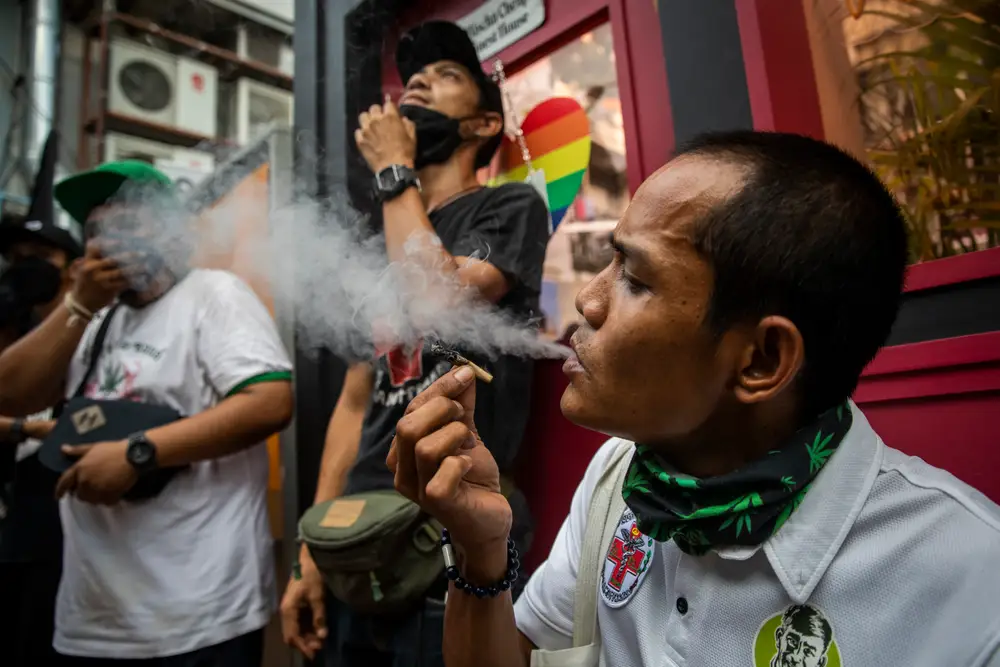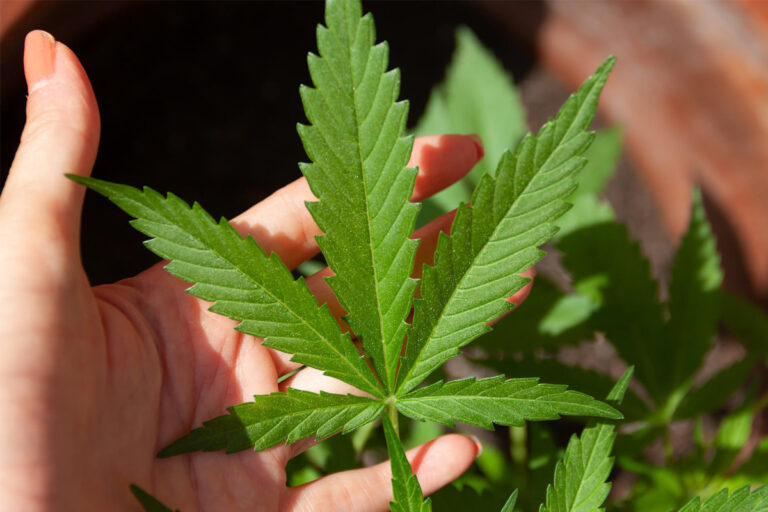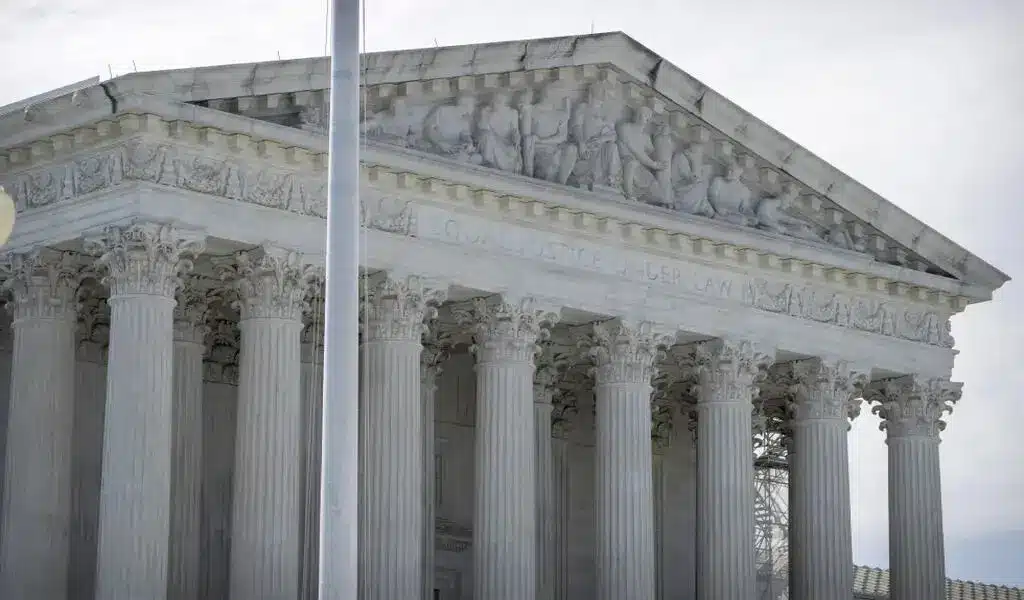News
Thailand’s Cannabis Policy: Embracing a Nuanced Approach for Health and Economy

(CTN News) – This is an opinion editorial by Carl K Linn, VP of Policy & Business Development at The American Journal of Cannabinoid Medicine.
I extend my best wishes in the name of Prime Minister Srettha Thavisin, Deputy Prime Minister Anutin Charnvirakul, Minister of Public Health Somsak Thepsuthin, Former Minister of Public Health Cholnan Srikaew, and members of the Thai Parliament.
As a representative of The American Journal of Endocannabinoid Medicine, I am writing to you today with renewed optimism regarding Thailand’s potential to become a global leader in responsible cannabis regulation.
In light of the recent cabinet reshuffle and Mr. Somsak Thepsuthin’s appointment as Public Health Minister, there is a critical opportunity to embrace a pragmatic approach that prioritizes public health, economic benefits, and patient well-being.
Cholnan Srikaew’s replacement by former Justice Minister Somsak Thepsuthin highlights the importance of finding a solution to the deep political and social divisions involving cannabis.

A Stalemated Debate and the Need for Compromise
As a result of the ongoing stalemate over the cannabis draft act, particularly the proposed prohibition of recreational use, it is clear that there is no consensus on how to move forward.
As a result of the Prime Minister’s public statements advocating for cannabis to be reclassified as a narcotic and the swift opposition from Deputy Prime Minister Anutin Charnvirakul, there are deep political fissures on this issue.
With its emphasis on negligible regulation or recriminalization, this all-or-nothing approach risks overlooking the potential benefits of a more nuanced regulatory approach.
There is no doubt that Dr. Cholnan Srikaew was under tremendous pressure from both pro-cannabis and anti-cannabis factions during his time as Minister of Public Health.
The influence of former Prime Minister Thaksin Shinawatra, an ardent opponent of cannabis, adds to the complexity of the situation.
A New Health Minister and the Road Ahead
As Health Minister, Mr. Somsak Thepsuthin must navigate a minefield of competing interests. While his prior support for decriminalization is encouraging, he does not possess a strong understanding of the medical aspects of cannabis.
The Limitations of the Binary: Beyond “Anything Goes” or Recriminalization
An all-or-nothing approach to cannabis regulation, such as the one in the Cannabis Act, is exemplified by the current debate surrounding the recreational use of cannabis.
Cannabis recriminalization disregards not only the growing body of evidence regarding its therapeutic potential but also fails to address the thriving unregulated market, potentially further obliterating it.

The Power of “Both/And”: A Two-Tiered Expansive Medical Cannabis Solution
The Expansive Medical Cannabis proposal I recently outlined allows Thailand to take a more nuanced approach: a “both/and” approach. In this framework, medical cannabis regulations are prioritized while acknowledging the realities of existing demand for the product. The proposal is summarized as follows:
-
A Two-Tiered Access System:
-
Tier 1: Expanding Access through Licensed Dispensaries:
-
In this tier, existing dispensaries can be repurposed as medical cannabis dispensaries under a clear regulatory framework to streamline the transition. In addition to offering patients a wide range of cannabis products based on their needs, trained staff can guide them toward appropriate cannabis products as usual.
-
Opponents may argue that an open system poses a risk of misuse. Nevertheless, strict regulations, including age verification, clear dosage guidelines, and aggressive educational environments, can mitigate the risks. It is also imperative to promote responsible use through public education campaigns.
-
A key benefit of this tier is that patients are empowered to explore the benefits of cannabis for their specific conditions by gaining greater control over their treatment journey. Medicinal cannabis dispensaries may be required to present themselves as clinics, offering individualized learning centers with infographics on the walls, peer-reviewed cannabis information online, and even filling prescriptions.
-
-
Tier 2: Prescription-Based Access for Complex Conditions:
-
As part of this tier, patients with complex medical conditions may require ongoing physician supervision, as well as potentially high-THC formulations or specialized cannabis products.
-
This ensures continued doctor involvement for such cases and signals to employees that this patient should not be exposed to other products or enticed to purchase anything not recommended by his or her healthcare professional.
-
The Thai Advantage: Leveraging Traditional Wisdom and Modern Science
There has been a recent explosion in research into the endocannabinoid system (ECS), which provides scientific evidence for the therapeutic effects observed in Thai Traditional Medicine (TTM) practices that have used cannabis for centuries.
In the future, medical cannabis treatments will seamlessly integrate with established TTM practices, providing patients with a truly holistic approach to their medical care. This would strengthen Thailand’s position as a global leader in medical tourism while also fostering innovation within the medical cannabis industry, resulting in the development of innovative treatment options combining traditional practices and modern scientific understanding.
A Call for Open Dialogue and Evidence-Based Policymaking
As Thailand prepares to become a global cannabis innovation hub, the next few months will be crucial for Thailand’s cannabis policy. For Thailand to thrive as a global cannabis innovation hub, I urge you to adhere to the following principles:
-
Open Dialogue: To reach a solution that addresses all concerns, policymakers, medical professionals, industry stakeholders, and the general public must communicate openly and transparently.
-
Evidence-Based Policymaking: Ensure that regulatory decisions are based on the most recent research regarding cannabis’s therapeutic potential and potential risks.
-
A Patient-Centered Approach: We prioritize patients’ needs and well-being. Our two-tiered Expansive Medical Cannabis system provides patients with more control over their treatment journey while ensuring patient oversight.
A brighter future for Thailand cannabis
Thailand can unlock the full potential of cannabis by adopting the Expansive Medical Cannabis proposal:
-
Becoming a Global Leader in Responsible Cannabis Regulation: Thailand can serve as a model for other countries considering cannabis legalization, demonstrating a commitment to safety, accessibility, and responsible innovation.
-
Cultivating a Flourishing Medical Cannabis Sector: Repurposed recreational dispensaries can become hubs for high-quality medical cannabis, fostering competition and innovation within the medical cannabis industry. As a result, Thai will be able to provide patients with a greater variety of safe and effective cannabis products, leading to increased economic growth and job opportunities.
-
A Beacon of Innovation in Medical Cannabis Treatment: Thailand can become a leader in the development of cannabis-based treatment options by integrating traditional practices with modern scientific understanding. This will benefit Thai patients and international medical tourists, further boosting Thailand’s economy.
-
Emerging as a Global Medical Tourism Destination: Combined with Thailand’s established tradition of Traditional Medicine and its reputation for hospitality, a robust medical cannabis program can generate a thriving medical tourism market. Due to Thailand’s cutting-edge cannabis treatments and holistic approach to healthcare, patients from around the world will be attracted to the country.
It is a pragmatic, preventive, patient-centered proposal emphasizing public health, economic growth, and responsible innovation as priorities for the Expansive Medical Cannabis proposal.
By leveraging existing infrastructure, it empowers patients to take greater control of their treatment journeys and fosters a robust medical cannabis industry.
By embracing this framework, Thailand will be able to seize this historic opportunity to become a global leader in the responsible and innovative use of cannabis.
You, the esteemed leaders of Thailand, should encourage open dialogue, prioritize evidence-based policymaking, and put patients’ needs at the forefront of this critical conversation. As a result of our collaboration, Thailand’s citizens and its position on the global stage can benefit from cannabis’s vast potential.

News
Trudeau’s Gun Grab Could Cost Taxpayers a Whopping $7 Billion

A recent report indicates that since Trudeau’s announcement of his gun buyback program four years ago, almost none of the banned firearms have been surrendered.
The federal government plans to purchase 2,063 firearm models from retailers following the enactment of Bill C-21, which amends various Acts and introduces certain consequential changes related to firearms. It was granted royal assent on December 15 of last year.
This ban immediately criminalized the actions of federally-licensed firearms owners regarding the purchase, sale, transportation, importation, exportation, or use of hundreds of thousands of rifles and shotguns that were previously legal.
The gun ban focused on what it termed ‘assault-style weapons,’ which are, in reality, traditional semi-automatic rifles and shotguns that have enjoyed popularity among hunters and sport shooters for over a century.
In May 2020, the federal government enacted an Order-in-Council that prohibited 1,500 types of “assault-style” firearms and outlined specific components of the newly banned firearms. Property owners must adhere to the law by October 2023.
Trudeau’s Buyback Hasn’t Happened
“In the announcement regarding the ban, the prime minister stated that the government would seize the prohibited firearms, assuring that their lawful owners would be ‘grandfathered’ or compensated fairly.” “That hasn’t happened,” criminologist Gary Mauser told Rebel News.
Mauser projected expenses ranging from $2.6 billion to $6.7 billion. The figure reflects the compensation costs amounting to $756 million, as outlined by the Parliamentary Budget Office (PBO).
“The projected expenses for gathering the illegal firearms are estimated to range from $1.6 billion to $7 billion.” “This range estimate increases to between $2.647 billion and $7 billion when compensation costs to owners are factored in,” Mauser stated.
Figures requested by Conservative MP Shannon Stubbs concerning firearms prohibited due to the May 1, 2020 Order In Council reveal that $72 million has been allocated to the firearm “buyback” program, yet not a single firearm has been confiscated to date.
In a recent revelation, Public Safety Canada disclosed that the federal government allocated a staggering $41,094,556, as prompted by an order paper question from Conservative Senator Don Plett last September, yet yielded no tangible outcomes.
An internal memo from late 2019 revealed that the Liberals projected their politically motivated harassment would incur a cost of $1.8 billion.
Enforcement efforts Questioned
By December 2023, estimates from TheGunBlog.ca indicate that the Liberals and RCMP had incurred or were responsible for approximately $30 million in personnel expenses related to the enforcement efforts. The union representing the police service previously stated that the effort to confiscate firearms is a “misdirected effort” aimed at ensuring public safety.
“This action diverts crucial personnel, resources, and funding from tackling the more pressing and escalating issue of criminal use of illegal firearms,” stated the National Police Federation (NPF).
The Canadian Sporting Arms & Ammunition Association (CSAAA), representing firearms retailers, has stated it will have “zero involvement” in the confiscation of these firearms. Even Canada Post held back from providing assistance due to safety concerns.
The consultant previously assessed that retailers are sitting on almost $1 billion worth of inventory that cannot be sold or returned to suppliers because of the Order-In-Council.
“Despite the ongoing confusion surrounding the ban, after four years, we ought to be able to address one crucial question.” Has the prohibition enhanced safety for Canadians? Mauser asks.
Illegally Obtained Firearms are the Problem
Statistics Canada reports a 10% increase in firearm-related violent crime between 2020 and 2022, rising from 12,614 incidents to 13,937 incidents. In that timeframe, the incidence of firearm-related violent crime increased from 33.7 incidents per 100,000 population in 2021 to 36.7 incidents the subsequent year.
“This marks the highest rate documented since the collection of comparable data began in 2009,” the criminologist explains.
Supplementary DataData indicates that firearm homicides have risen since 2020. “The issue lies not with lawfully-held firearms,” Mauser stated.
Firearms that have been banned under the Order-in-Council continue to be securely stored in the safes of their lawful owners. The individuals underwent a thorough vetting process by the RCMP and are subject to nightly monitoring to ensure there are no infractions that could pose a risk to public safety.
“The firearms involved in homicides were seldom legally owned weapons wielded by their rightful owners,” Mauser continues. The number of offenses linked to organized crime has surged from 4,810 in 2016 to a staggering 13,056 in 2020.
“If those in power … aim to diminish crime and enhance public safety, they ought to implement strategies that effectively focus on offenders and utilize our limited tax resources judiciously to reach these objectives,” he stated.
Related News:
Millennials in Canada Have Turned their Backs on Justin Trudeau
Millennials in Canada Have Turned their Backs on Justin Trudeau
News
Google’s Search Dominance Is Unwinding, But Still Accounting 48% Search Revenue

Google is so closely associated with its key product that its name is a verb that signifies “search.” However, Google’s dominance in that sector is dwindling.
According to eMarketer, Google will lose control of the US search industry for the first time in decades next year.
Google will remain the dominant search player, accounting for 48% of American search advertising revenue. And, remarkably, Google is still increasing its sales in the field, despite being the dominating player in search since the early days of the George W. Bush administration. However, Amazon is growing at a quicker rate.
Google’s Search Dominance Is Unwinding
Amazon will hold over a quarter of US search ad dollars next year, rising to 27% by 2026, while Google will fall even more, according to eMarketer.
The Wall Street Journal was first to report on the forecast.
Lest you think you’ll have to switch to Bing or Yahoo, this isn’t the end of Google or anything really near.
Google is the fourth-most valued public firm in the world. Its market worth is $2.1 trillion, trailing just Apple, Microsoft, and the AI chip darling Nvidia. It also maintains its dominance in other industries, such as display advertisements, where it dominates alongside Facebook’s parent firm Meta, and video ads on YouTube.
To put those “other” firms in context, each is worth more than Delta Air Lines’ total market value. So, yeah, Google is not going anywhere.
Nonetheless, Google faces numerous dangers to its operations, particularly from antitrust regulators.
On Monday, a federal judge in San Francisco ruled that Google must open up its Google Play Store to competitors, dealing a significant blow to the firm in its long-running battle with Fortnite creator Epic Games. Google announced that it would appeal the verdict.
In August, a federal judge ruled that Google has an illegal monopoly on search. That verdict could lead to the dissolution of the company’s search operation. Another antitrust lawsuit filed last month accuses Google of abusing its dominance in the online advertising business.
Meanwhile, European regulators have compelled Google to follow tough new standards, which have resulted in multiple $1 billion-plus fines.

Pixa Bay
Google’s Search Dominance Is Unwinding
On top of that, the marketplace is becoming more difficult on its own.
TikTok, the fastest-growing social network, is expanding into the search market. And Amazon has accomplished something few other digital titans have done to date: it has established a habit.
When you want to buy anything, you usually go to Amazon, not Google. Amazon then buys adverts to push companies’ products to the top of your search results, increasing sales and earning Amazon a greater portion of the revenue. According to eMarketer, it is expected to generate $27.8 billion in search revenue in the United States next year, trailing only Google’s $62.9 billion total.
And then there’s AI, the technology that (supposedly) will change everything.
Why search in stilted language for “kendall jenner why bad bunny breakup” or “police moving violation driver rights no stop sign” when you can just ask OpenAI’s ChatGPT, “What’s going on with Kendall Jenner and Bad Bunny?” in “I need help fighting a moving violation involving a stop sign that wasn’t visible.” Google is working on exactly this technology with its Gemini product, but its success is far from guaranteed, especially with Apple collaborating with OpenAI and other businesses rapidly joining the market.
A Google spokeswoman referred to a blog post from last week in which the company unveiled ads in its AI overviews (the AI-generated text that appears at the top of search results). It’s Google’s way of expressing its ability to profit on a changing marketplace while retaining its business, even as its consumers steadily transition to ask-and-answer AI and away from search.

Google has long used a single catchphrase to defend itself against opponents who claim it is a monopoly abusing its power: competition is only a click away. Until recently, that seemed comically obtuse. Really? We are going to switch to Bing? Or Duck Duck Go? Give me a break.
But today, it feels more like reality.
Google is in no danger of disappearing. However, every highly dominating company faces some type of reckoning over time. GE, a Dow mainstay for more than a century, was broken up last year and is now a shell of its previous dominance. Sears declared bankruptcy in 2022 and is virtually out of business. US Steel, long the foundation of American manufacturing, is attempting to sell itself to a Japanese corporation.
SOURCE | CNN
News
The Supreme Court Turns Down Biden’s Government Appeal in a Texas Emergency Abortion Matter.

(VOR News) – A ruling that prohibits emergency abortions that contravene the Supreme Court law in the state of Texas, which has one of the most stringent abortion restrictions in the country, has been upheld by the Supreme Court of the United States. The United States Supreme Court upheld this decision.
The justices did not provide any specifics regarding the underlying reasons for their decision to uphold an order from a lower court that declared hospitals cannot be legally obligated to administer abortions if doing so would violate the law in the state of Texas.
Institutions are not required to perform abortions, as stipulated in the decree. The common populace did not investigate any opposing viewpoints. The decision was made just weeks before a presidential election that brought abortion to the forefront of the political agenda.
This decision follows the 2022 Supreme Court ruling that ended abortion nationwide.
In response to a request from the administration of Vice President Joe Biden to overturn the lower court’s decision, the justices expressed their disapproval.
The government contends that hospitals are obligated to perform abortions in compliance with federal legislation when the health or life of an expectant patient is in an exceedingly precarious condition.
This is the case in regions where the procedure is prohibited. The difficulty hospitals in Texas and other states are experiencing in determining whether or not routine care could be in violation of stringent state laws that prohibit abortion has resulted in an increase in the number of complaints concerning pregnant women who are experiencing medical distress being turned away from emergency rooms.
The administration cited the Supreme Court’s ruling in a case that bore a striking resemblance to the one that was presented to it in Idaho at the beginning of the year. The justices took a limited decision in that case to allow the continuation of emergency abortions without interruption while a lawsuit was still being heard.
In contrast, Texas has been a vocal proponent of the injunction’s continued enforcement. Texas has argued that its circumstances are distinct from those of Idaho, as the state does have an exemption for situations that pose a significant hazard to the health of an expectant patient.
According to the state, the discrepancy is the result of this exemption. The state of Idaho had a provision that safeguarded a woman’s life when the issue was first broached; however, it did not include protection for her health.
Certified medical practitioners are not obligated to wait until a woman’s life is in imminent peril before they are legally permitted to perform an abortion, as determined by the state supreme court.
The state of Texas highlighted this to the Supreme Court.
Nevertheless, medical professionals have criticized the Texas statute as being perilously ambiguous, and a medical board has declined to provide a list of all the disorders that are eligible for an exception. Furthermore, the statute has been criticized for its hazardous ambiguity.
For an extended period, termination of pregnancies has been a standard procedure in medical treatment for individuals who have been experiencing significant issues. It is implemented in this manner to prevent catastrophic outcomes, such as sepsis, organ failure, and other severe scenarios.
Nevertheless, medical professionals and hospitals in Texas and other states with strict abortion laws have noted that it is uncertain whether or not these terminations could be in violation of abortion prohibitions that include the possibility of a prison sentence. This is the case in regions where abortion prohibitions are exceedingly restrictive.
Following the Supreme Court’s decision to overturn Roe v. Wade, which resulted in restrictions on the rights of women to have abortions in several Republican-ruled states, the Texas case was revisited in 2022.
As per the orders that were disclosed by the administration of Vice President Joe Biden, hospitals are still required to provide abortions in cases that are classified as dire emergency.
As stipulated in a piece of health care legislation, the majority of hospitals are obligated to provide medical assistance to patients who are experiencing medical distress. This is in accordance with the law.
The state of Texas maintained that hospitals should not be obligated to provide abortions throughout the litigation, as doing so would violate the state’s constitutional prohibition on abortions. In its January judgment, the 5th United States Circuit Court of Appeals concurred with the state and acknowledged that the administration had exceeded its authority.
SOURCE: AP
SEE ALSO:
Could Last-Minute Surprises Derail Kamala Harris’ Campaign? “Nostradamus” Explains the US Poll.
-

 News3 years ago
News3 years agoLet’s Know About Ultra High Net Worth Individual
-
Entertainment2 years ago
Mabelle Prior: The Voice of Hope, Resilience, and Diversity Inspiring Generations
-

 Health3 years ago
Health3 years agoHow Much Ivermectin Should You Take?
-

 Tech2 years ago
Tech2 years agoTop Forex Brokers of 2023: Reviews and Analysis for Successful Trading
-

 Lifestyles3 years ago
Lifestyles3 years agoAries Soulmate Signs
-

 Movies2 years ago
Movies2 years agoWhat Should I Do If Disney Plus Keeps Logging Me Out of TV?
-

 Health3 years ago
Health3 years agoCan I Buy Ivermectin Without A Prescription in the USA?
-

 Learning2 years ago
Learning2 years agoVirtual Numbers: What Are They For?
